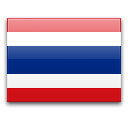All You Need to Know About AED Machines and How to Use Them
An Automated External Defibrillator, or AED Machine, is an emergency device used to resuscitate patients who are in cardiac arrest. The device sends an electric shock to the heart to make it contract, helping it to start beating in a regular rhythm again. AED and CPR are the way to treat a patient who is unconscious and isn’t breathing. In this article, we’ll go into detail about AED, how it works, and how to use it in an emergency situation.
How does the AED machine work?
A healthy patient’s heart is triggered by regular electrical impulses (normal sinus rhythm) allowing to pump the blood which is rich in oxygen to the body and the brain. In the case of an injury or an illness, the heart rhythm of the patient may become irregular and the heart will no longer be able to pump oxygen-rich blood. Then, the heart of the patient will be in fibrillation and the victim will suffer from a cardiac arrest.
An AED is a computer able to analyze the heart rhythm of the patient, allowing the user to see whether an electric shock is advised. There are two types of deadly heart rhythms that the unit will look for: ventricular fibrillation and ventricular tachycardia. If the analyzer detects those irregular rhythms, it will allow a shock to be given. Once the shock is delivered, you will need to use the analyzer again to see if the heart has returned to its regular rhythm. It’s vital that you move quickly whenever you’re trying to perform a life-saving maneuver such as this. The longer the brain goes without oxygen, the more damage will be done, and the lower the chances of resuscitation. In case of a sudden cardiac arrest, the chance of survival decrease by 10% every minute without CPR and AED.
Importance considerations to keep in mind.
If the patient is in or near a water source such as a puddle or a pool, you will need to remove them from it and make sure that their body is as dry as possible. Moisture on the ground such as rain, snow, or wet soil is typically not a cause for concern. If the patient’s chest is hairy, you will need to shave before placing the pads. If the victim has a necklace, remove it. When you apply the pads, make sure they come into contact with the bare skin of the patient.
Keep in mind that you are never to remove the AED pads from the patient or turn the machine off unless instructed by a professional.
How to use an AED machine
- Secure and dry the patient’s body. Turn on the machine and place one pad on the right side of the chest above the nipple. Then, place another pad on the patient’s lower ribs below the armpit. Secure the pad tightly onto the patient’s body.
- Once the pad is on, the AED unit will start the analysis. Do not touch the pad or move the patient during this time.
- If the AED says, “Shock advised, charging…,” shout, “Clear” and make sure no one is touching the patient. Push the shock button when the AED tells you to. If no shock is advised, give CPR if the patient is not moving and not breathing.
If a shock is required, the AED machine will say “Shock advised, charging…” During this process, you need to make sure that everyone is at least two feet away from the audience. Once the machine is ready for a shock, shout “Clear” loudly and clearly while you apply the electric charge.
- Once the shock is delivered, give 30 chest compressions followed immediately by 2 breaths down the throat. Continue the process until you see signs of life. The AED unit will automatically reanalyze the patient again in 2 minutes and advise you if a shock is required.
If you’re looking for AED training in Bangkok, get in touch with Bangkok First Aid today! We’re happy to help.

We deliver High-Quality CPR AED Training Course in Bangkok and Everywhere in Thailand.
As an American Heart Association training provider, we provide high-quality CPR AED training courses in Bangkok and everywhere in Thailand. Attendees will learn with confidence how to perform chest compressions, how to give rescue breaths as well as how to deploy and use an AED in case of a sudden cardiac arrest. By training with us, we ensure our students leaving with the skills and confidence to use this saving life device.



